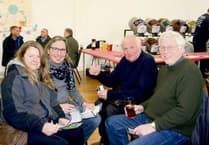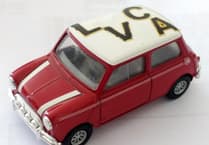CAMPAIGNERS fighting a controversial traffic experiment in Exeter have urged the councillors who created it to go back to the drawing board amid claims it has become a “nightmare”.
“It’s like a bubble under wallpaper” said Cllr Peter Holland (Con, St Loyes). “A problem solved in one area manifests itself in another.”
Now Devon County Council’s Exeter highways and traffic orders committee (HATOC) has met to consider a progress report on the trial scheme in Heavitree and Whipton.
Cars are banned from some streets in a pilot designed to cut pollution and improve road safety, but protesters say it just moves traffic elsewhere and causes massive disruption.
Cllr Holland said he has spoken to more than 100 people about the trial, and all but a handful are against it.
“The figures speak for themselves,” he said. “I am asking for the scheme to be paused for a full and thorough assessment.
“At a stroke this committee has alienated a large section of the Exeter community.”
HATOC – a committee made up of county and city councillors, first started consulting on the Low Traffic Neighbourhood (LTN) scheme several years ago.
But since the 18-month trial was introduced in the summer, there have been angry protests.
Chanting campaigners waving “Stop the Block” placards greeted councillors arriving for the meeting, and a number of them were invited to speak.
Campaigner, Ian Frankum said holding the meeting on the eve of Halloween was appropriate because the scheme was a “nightmare”, and Cllr Holland called for the trial to be suspended.
He said: “This committee has strived to exert control over individual freedoms.
“This is not a sincere effort to reduce pollution.”
But climate scientist Professor Richard Betts spoke on behalf of residents in favour of the scheme, saying: “Action to reduce traffic levels is crucial to our wellbeing, making the environment healthier and tackling climate change.
“There is not enough space in our city for all travel to be in individual cars. The key question is how overall traffic can be reduced, and this is testing out one method.
“If streets are made safer for cycling and walking, more people choose those options.”
Guy Henderson
LDRS




